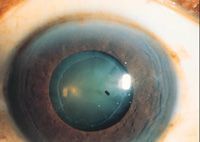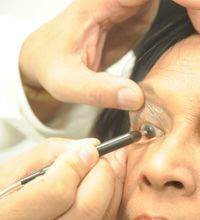
Causes
In many cases, glaucoma optic nerve damage occurs from high eye pressure. Nerve damage can usually be stopped or slowed by lowering the eye pressure. Most glaucoma treatment, with medicines, laser, or conventional surgery, is designed only to lower the eye pressure. Some eyes with glaucoma optic nerve damage continue to deteriorate despite having the lowest possible eye pressures. It is not known why this happens. Intensive research around the world is now directed at understanding the cause of the damage in these patients and to develop new treatments to preserve the optic nerve.Many different eye disorders cause high eye pressure. After measuring the eye pressure, your ophthalmologist attempts to determine the cause of the elevation. Nearly always, some form of “clogging” or blockage of the drainage of internal fluid within the eye (aqueous humor) causes increased eye pressure. Since the eye continually produces this fluid, obstruction of the drainage causes the eye pressure to increase. Almost any eye disorder associated with aging, inflammation, bleeding, injury, tumor or even birth defects can raise the eye pressure.

Exfoliation Syndrome

However, in most cases of glaucoma, the eye has no specific abnormality and is said to have primary open-angle glaucoma. In other cases, the eye may be unusually small or exhibit other minor shape abnormalities that cause closed-angle glaucoma. In closed-angle glaucoma, the drainage system is totally blocked instead of just being clogged.
At least fifty different mechanisms have been described that can raise the eye pressure, but all produce similar damage of the optic nerve. All methods of treatment are designed to lower the eye pressure to a level that will prevent further optic nerve damage.

Contact Us
We will get back to you as soon as possible.
Please try again later.

Manhattan Office

Queens Office

Navigation

